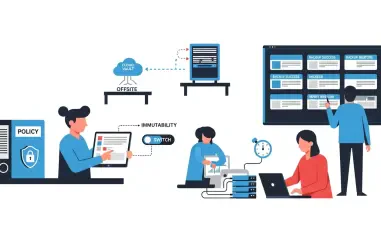Public perception often categorizes Dark Web marketplaces as enigmatic and perilous, yet they are complex ecosystems mirroring aspects of legitimate e-commerce. Understanding the overlapping strategies is crucial for unraveling these clandestine networks and preparing for their implications on cybersecurity. This article presents a comprehensive market analysis, highlighting how these environments function similarly to legal markets despite their foundational illegality.
Evolution and Dynamics of Shadow Markets
The Dark Web has undergone significant transformations, adapting rapidly to technological upgrades and the shifting digital landscape. This evolution parallels traditional market growth where innovation drives progress. Key events, such as the launch and successive shutdowns of prominent platforms like Silk Road, underscore the adaptability and resilience of these illegal marketplaces. These developments have deepened understanding of market behaviors, highlighting the dynamic adaptation necessary for sustaining operations within stringent regulatory frameworks.
Establishing Trust in Illicit Transactions
Building a Reliability Framework
The construction of trust within Dark Web markets is an intricate process, akin to the trust systems employed by conventional e-commerce platforms. Anonymous vendors leverage reputation systems to establish credibility, facilitating transactions despite the criminal underpinnings. These mechanisms ensure that vendors with consistent positive reviews gain prominence, fostering a network where reliability is paramount. This approach parallels how legitimate businesses utilize customer feedback to enhance their market positions, thereby embedding trust within their operational structures.
The Role of Cryptocurrencies
Cryptocurrencies, crucial in fostering anonymous transactions, have cemented their place in Dark Web ecosystems. While Bitcoin initially led as the currency of choice, its transparency has shifted preferences toward options like Monero, prized for its enhanced privacy features. The strategic use of these digital currencies mirrors innovations in fintech, focusing on security and user confidentiality. This evolution in digital payment methods signifies a broader trend toward technologies that balance anonymity with traceability.
Navigating Legal Complexities
Dark Web marketplaces do not operate within a legal vacuum; they continuously maneuver around legal constraints and enforcement measures. The adaptability of these markets demonstrates a keen understanding of jurisdictional nuances, leveraging legal loopholes to sustain operations. Increasing collaboration between law enforcement and private cybersecurity firms illustrates an effort to bridge gaps in resources and expertise, disrupting these elusive entities. This cooperative endeavor signals a strategic shift in combating cybercrime through multi-faceted approaches.
Future Trajectories of Illicit Commerce
The future of Dark Web markets is intertwined with trends in technology and regulation. As cybersecurity measures advance, so do the tactics employed by these illicit networks. Emerging trends in encryption and digital anonymity pose challenges and opportunities for both market operators and regulators. A forward-looking perspective anticipates a continuous evolution of these shadow economies, with potential regulatory innovations shaping their trajectory. Understanding this could help forecast shifts and prepare robust countermeasures.
Strategic Insights and Recommendations
In-depth knowledge of Dark Web dynamics can empower businesses and cybersecurity experts to enhance their digital defenses. Emphasizing the importance of understanding these markets, organizations are urged to integrate adaptive measures into their cybersecurity strategies, mimicking the agility displayed by cybercriminals. By developing a proactive stance, businesses can safeguard their interests against the pervasive threats posed by these underground market operations.
Implications and Strategic Pathways
Reflecting on the intricate dynamics of Dark Web marketplaces reveals their significant parallels to legitimate e-commerce. The trust systems, payment innovations, and adaptive mechanisms underscore the complexities and resilience of these illicit networks. Yet, the ongoing challenge remains for law enforcement and businesses alike to counteract their pervasive influence. The path forward involves strategic collaborations, technological innovation, and a depth of understanding that aligns with both theoretical insights and practical applications. This approach fosters a proactive and informed stance needed to tackle the enduring challenges posed by these shadow economies.













